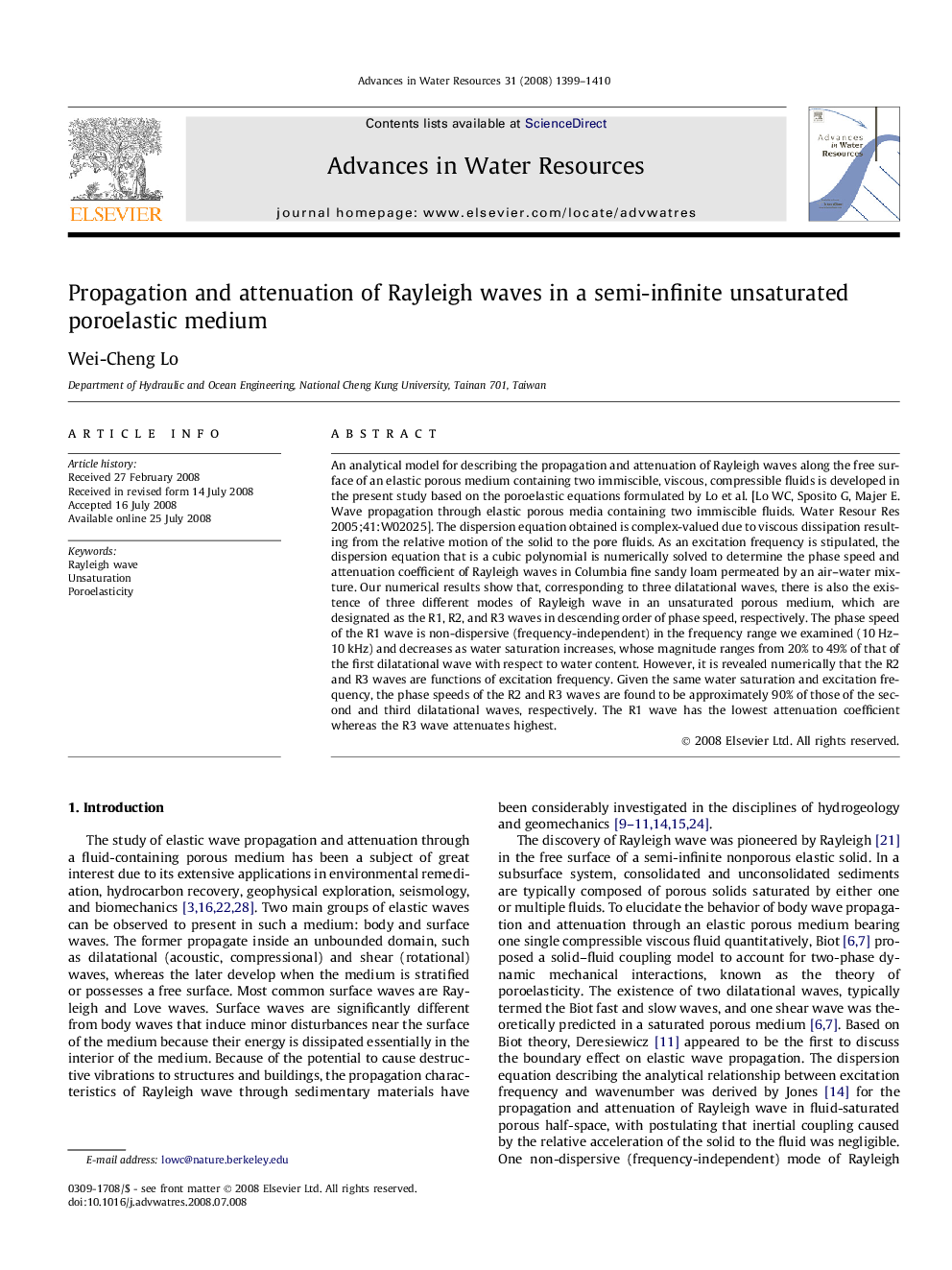| کد مقاله | کد نشریه | سال انتشار | مقاله انگلیسی | نسخه تمام متن |
|---|---|---|---|---|
| 4526917 | 1323865 | 2008 | 12 صفحه PDF | دانلود رایگان |

An analytical model for describing the propagation and attenuation of Rayleigh waves along the free surface of an elastic porous medium containing two immiscible, viscous, compressible fluids is developed in the present study based on the poroelastic equations formulated by Lo et al. [Lo WC, Sposito G, Majer E. Wave propagation through elastic porous media containing two immiscible fluids. Water Resour Res 2005;41:W02025]. The dispersion equation obtained is complex-valued due to viscous dissipation resulting from the relative motion of the solid to the pore fluids. As an excitation frequency is stipulated, the dispersion equation that is a cubic polynomial is numerically solved to determine the phase speed and attenuation coefficient of Rayleigh waves in Columbia fine sandy loam permeated by an air–water mixture. Our numerical results show that, corresponding to three dilatational waves, there is also the existence of three different modes of Rayleigh wave in an unsaturated porous medium, which are designated as the R1, R2, and R3 waves in descending order of phase speed, respectively. The phase speed of the R1 wave is non-dispersive (frequency-independent) in the frequency range we examined (10 Hz–10 kHz) and decreases as water saturation increases, whose magnitude ranges from 20% to 49% of that of the first dilatational wave with respect to water content. However, it is revealed numerically that the R2 and R3 waves are functions of excitation frequency. Given the same water saturation and excitation frequency, the phase speeds of the R2 and R3 waves are found to be approximately 90% of those of the second and third dilatational waves, respectively. The R1 wave has the lowest attenuation coefficient whereas the R3 wave attenuates highest.
Journal: Advances in Water Resources - Volume 31, Issue 10, October 2008, Pages 1399–1410